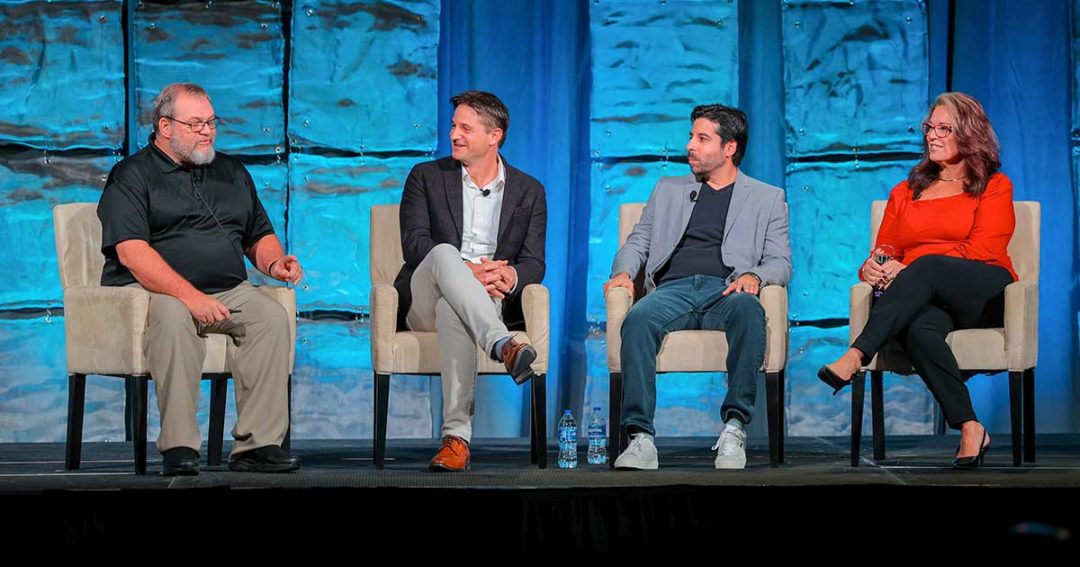
AI: ‘A tidal wave of innovation’
How artificial intelligence technology and use cases could explode in 2024.
The world largely became aware of ChatGPT on Nov. 30, 2022.
Since then, anyone with an internet connection has been able to explore the possibilities of generative artificial intelligence (AI).
Some credit unions have already rolled out use cases. However, Joey Rudisill, chief information officer at $518 million asset Central Willamette Credit Union in Albany, Ore., believes the past 11 months have been building toward a “tidal wave of innovation.”
“The innovation curve takes time,” says Rudisill, who addressed the 2023 CUNA Operations & Member Experience Council and CUNA Technology Council Conference in Denver. “Companies need to develop and test their products, and go through legal, marketing, and quality assurance. That typically takes a year or a year and a half. We’re going to see a tidal wave of innovation come out in the next year from names we know and names we don’t.”
“In 2023, we were asking questions. I think we’re going to see a lot more action in 2024,” agrees Senso.ai founder/CEO Saroop Bharwani.
Kathy Sianis, vice president of financial institution strategy at Posh Technologies, says the technology is advancing so rapidly that “if you’re not looking at AI in 2024, you’re going to wish that you would have.”
How do credit unions join this wave and ensure they don’t miss the boat? And what would an explosion of use cases look like in the financial services industry?
Rudisill believes it starts with research and exploration.
“It’s incredibly easy to get started,” he says, noting Central Willamette has used AI for vendor management, contracts, job descriptions, interview questions, emails, and more. “All it takes is a little ingenuity and determination to sit down with a computer and have a dialogue with it. It starts there and builds upon itself, and you start to develop more use cases.”
No matter what form it takes, credit union AI use cases will ultimately tie back to the member. Best Innovation Group founder/CEO John Best says credit unions have an abundance of member data, but much of it isn’t used in the right way at the right time.
While credit unions have traditionally used demographics to determine member needs, AI succeeds on a more personal level.
“We’re talking about personalizing each individual; looking at their accounts, behavior, and ways we can help them; and then providing guidance,” Rudisill says. “Not only can AI do the research, it can craft the message. We’ve been talking about personalization for decades. Now it’s here and we don’t know quite what to do with it."
While that level of personalization requires member data, Bharwani says many consumers are OK with organizations using their data if they provide transparency, consent, and the knowledge that the data is being used to provide a better experience.
“Think about the possibilities of how your members are behaving and feeling,” Bharwani says. “It saves time and unlocks new superpowers. Ultimately, if you’re serving members better, it’s going to be better for everyone.”
That includes staff members. Bharwani suggests that by 2030 everyone will have a “chief of staff” AI assistant in their pockets to book flights, manage calendars, contact others, and even converse with members.
With that in mind, Best asks, “if we took the mundane things off our plate, what would we do next?”
Credit unions may soon find out.